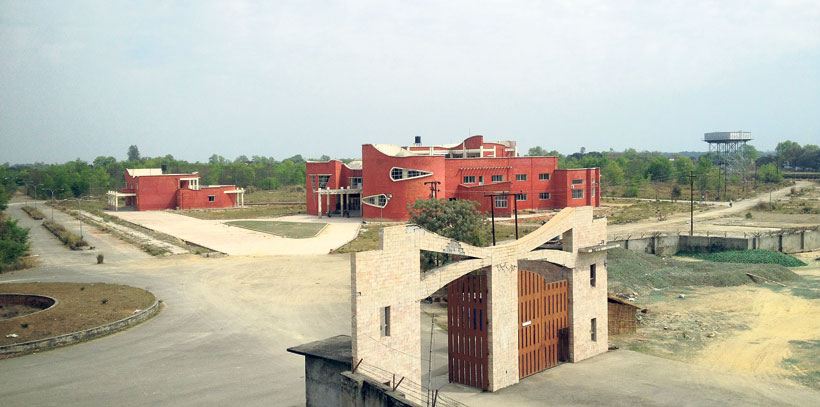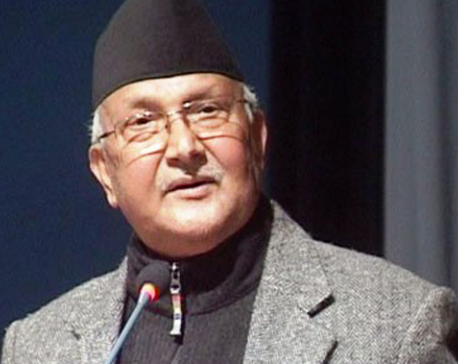
OR

More from Author
It takes 42 days to export to Nepal. The South Asian average is 33 days while it is 17.3 days in the ASEAN
In order for Nepal to graduate to the status of a middle income country, the current per capita Gross National Income (GNI) of US$ 730 must be raised to US$ 4,125. But the economic growth of Nepal has been rather sluggish for most of the post-1990 era. According to Basnet and Pandey (2014), even historically, annual economic growth in Nepal has been low, averaging around four percent since the early 1960s. Overall, the economy grew by 4.1 percent in the 1980s, 4.8 percent in the 1990s, 4.1 percent in the 2000s and 4.4 percent since then.
Given this state of Nepali economy, made worse by undesired externalities such as last year’s earthquakes, never ending political instability and perennial power outage, we need a lot of optimism to think of Nepal as a middle-income country. According to 2016 Global Competitiveness Report, Nepal’s macroeconomic environment is ranked 98th most competitive out of 138 economies. Similarly, its technological readiness and innovation is ranked 126th, and its infrastructure 130 out of 138 economies.
Nepal is still a predominantly agricultural country, with 31.6 percent of total GDP generated by the agro sector. So our growth must be based on high-value agricultural production. At the same time the government must also strengthen our industries, which is also important for Nepal’s middle-income country aspiration.
Rodrik (2013) believes that except for a handful of small countries that benefit from natural resources, all successful economies of past one century owe their growth to rapid industrialization.
So the role of industries in creating jobs and providing much required stimulus to the economy must be acknowledged.
At present 25.2 percent of Nepali population live below the 1.25-dollar-a-day poverty line and 78.4 percent population aged 15 and above are unemployed (Basic Statistics, 2016). Thus Nepal needs a new industrialization-based strategy that can generate jobs and thus reduce poverty. But this is easier said than done.
Political instability, low investment and lack of proper policies impede our growth. Developing countries like Nepal rely heavily on FDI for their industrial development. But the FDI flow is largely dependent on political stability. So FDI flow was low until 2008, largely due to the Maoist insurgency.
It increased after the end of armed conflict.
FDI increased by an annual average of 160 percent between 2008 and 2012. The increased flow of FDI and improving political climate are good signs for industrialization. But most of our investments have been small and they haven’t been focused on building our production capacities and competitiveness, which would allow Nepal to a part of the regional and global value chains (Basnet and Pandey, 2014). Nepal exports a few raw materials but imports a lot of finished products, which creates a negative Balance of Payment (BOP). Only a steady inflow of FDI will help improve this situation.
Second, inadequacy of infrastructure has sabotaged individual and institutional development endeavors. Good infrastructure is integral to the development process. Airways and roadways are the only available modes of transportation in Nepal, but they too are vulnerable to various externalities related to complex topography and weather patterns. Much of the peri-urban and rural roads are unfit for traffic during the rainy season. The old vehicles run by transport syndicates make travelling even more difficult. The air transport network is comparatively better, with competitive domestic and international markets.
According to World Bank’s World Development Indicators (2013), it takes 42 days to export in Nepal, while the South Asian average is 33 days and the ASEAN average is 17.3 days. Likewise, to import, it takes 39 days in Nepal, 34.3 days in South Asia and 17.5 days in the ASEAN.
Industrialization has played an important role in economic growth of China, Japan, South Korea and Indonesia in the post-World War II era. A robust industrial sector can boost per capita income by generating employment opportunities and various other positive spillovers. Therefore Nepal must also adopt liberal pro-industrialization policies so as to properly tap its industrial potential by attracting both domestic and foreign investors.
The author is an independent development professional
You May Like This

Women share personal stories of courage and transformation in a new book of essays
KATHMANDU, Nov 20: A new book of essays entitled "21 Resilient Women: Stories of courage, growth, and transformation" is being... Read More...

PM Oli says government poised for double-digit economic growth
KATHMANDU, Mar 1: Prime Minister KP Sharma Oli has said the government was working on a plan to hit a... Read More...

Tepid deposits growth worries bankers
Govt spending has not pumped much cash into banking system ... Read More...





Just In
- Nepalgunj ICP handed over to Nepal, to come into operation from May 8
- Nepal to gift two elephants to Qatar during Emir's state visit
- NUP Chair Shrestha: Resham Chaudhary, convicted in Tikapur murder case, ineligible for party membership
- Dr Ram Kantha Makaju Shrestha: A visionary leader transforming healthcare in Nepal
- Let us present practical projects, not 'wish list': PM Dahal
- President Paudel requests Emir of Qatar to initiate release of Bipin Joshi
- Emir of Qatar and President Paudel hold discussions at Sheetal Niwas
- Devi Khadka: The champion of sexual violence victims




_20240423174443.jpg)










Leave A Comment